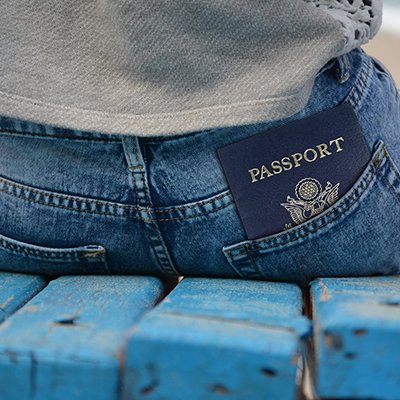Bragging rights are awarded to those hardy souls who have taken the bus ride from Chiang Mai to Pai in Thailand, provided you haven't spewed into one of the much-in-demand vomit bags. A road trip meant to take 3 hours is often driven by kamikaze van drivers who can complete it in about one hour of daredevil driving. For those in the know, before hopping onto the van, motion sickness tablets are taken like candy at Halloween. For those believing that they don't succumb to motion sickness or those unaware of the tortuous journey ahead, there's every chance they will end up with their heads bent over a barf bag. There's even a dedicated road sign on one of the first bends in the road depicting a caricature of a stick person bending over and vomiting into a bag! This says it all in comical detail.
Route 1095 in Thailand is infamous for its 762 bends as it winds up through hills, forests, and farmlands. The road is an anorexic version of a main thoroughfare, often with a sheer cliff face on one side and a massive drop on the other that disappears into habited hollows of terraced rice paddies where clouds linger due to the high altitude. It's even more of a pant-pooping ride when it's raining or foggy, windows are up, and the foul stench of vomit has permeated the van—the most hardened soul finds it hard not to join the throng of gagging passengers.
Motion sickness can make what is meant to be a pleasant journey utter hell, not just for you but for those around you. The consequences of suffering from motion sickness can be in the form of not just vomiting but include symptoms of dizziness and headaches, especially if you are dehydrated. It happens when your eyes, inner ear, and body transmit confusing signals to your brain, which occurs if your body is still but being moved about by outside forces such as a boat, bus, car, or plane. The causes include cruise ships in rough seas, the rocking of small boats out at sea, plane turbulence, or even during takeoff and landing.

There are a few tricks to avoiding motion sickness, apart from taking magic pills that may or may not work.
Where to Sit
Car—rear window seat, or the best is the front passenger seat, which someone else may be hogging.
Train—forward-facing window seat.
Plane—the wing section.
Boat—upper deck, especially if it’s open, and sit in the middle as you don’t want to get hit by flying barf from a passenger in front aiming for the ocean.
Van or bus—grab a window seat in the middle or close to the front.
If you think your much-anticipated journey will end in a barfing contest, other strategies to use are avoiding coffee that day and alcohol the night before. Don't put your nose into a book or look down at screens. Always try and grab a window seat so that you can open the window for fresh air, focus your sight onto a stationary item in the distance or on the horizon, don't drink a lot of water at any one time as this will slosh around in your stomach (sip water slowly), and don't have any large meals before the travel event. If you are feeling a bit queasy, the best action is to close your eyes, flick your chair back, lie down if possible, and relax.
There are numerous preventative motion sickness medications that you can buy from most pharmacies. In general, prescription medicines such as Meclizine will cost more than the across-the-counter variety known as Dramamine, which will make you sleepy. It depends on how much you want to see out of the window while traveling. If you don't care about the saying 'it's the journey, not the destination,' then slumber away until you reach where you want to be. There are other medical alternatives, such as patches worn behind the ear. But these are renowned for their side effects—dry mouth, blurred vision, and drowsiness. Wristbands to prevent motion sickness are another alternative—but they can be useless if not put on correctly across the right pressure point on the wrist.
Lastly, if you find yourself uncomfortable while traveling and fear that it's about to turn into a gush of yuk, sip small amounts of dry ginger or nibble on a green apple or some plain dry crackers. These are known to help some people; they won't help everyone, but at least you will have something to throw up rather than the painful experience of dry retching.
Gail Palethorpe, a self proclaimed Australian gypsy, is a freelance writer, photographer and eternal traveller. Check out her website Gail Palethorpe Photography and her Shutterstock profile.















